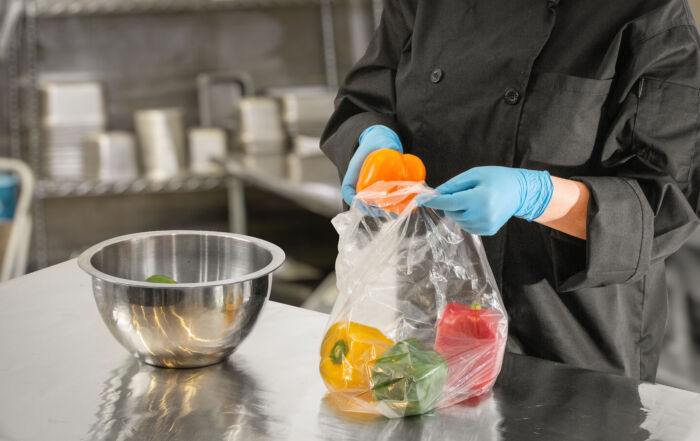Communicating Food Safety Messages
In our first blog for October, we reviewed the fundamentals of effective communication. We suggested considering the framework of Who, What, When, Where, and How for crafting messages and determining the best method for delivery. In this blog, we provide some suggestions on how to effectively message about correct handwashing and glove use, as these are fundamental safe food handling practices.
Correct handwashing by employees is often hit or miss. Research shows that staff know when and how to wash hands correctly, but don’t always act on that knowledge due to time availability, lack of supplies, or not being aware of the critical nature of handwashing. The message of why, when and how to wash hands in a foodservice setting needs to be conveyed. Managers cannot assume all employees know correct handwashing methods. Believe us, we have conducted extensive observational research in a variety of foodservices and the “splash and dash” approach is quite prevalent. FoodHandler® has created a variety of tools to convey the message about correct handwashing. There are videos that explain what to do and why it is important, which can be helpful in getting the message across. Posters and other signage that can be used to reinforce the message in the operation are also available. Standard Operating Procedures on handwashing expectations should be included in employee handbooks as well as the organization’s food safety plan. There are sample modifiable templates available at www.iowafoodsafety.org.
Using these resources incorporates different delivery methods that recognizes employees are individuals who each have unique learning styles, as Dr. Susan Arendt recommended in the September webinar. The visual-based learners will appreciate the videos and posters while those who learn best by reading will use the SOP as a guide. As managers, the key is to have these tools to show to staff along with communicating the expectation that this is how we do things here! If someone sees someone NOT washing hands when and how they should, then they should say something. It should be considered OK in your foodservice for one worker to remind another; we all should appreciate these nudges because everyone knows it is easy in the fast-paced environment to forget! Which leads us to how you communicate with customers about handwashing. How many times have you, as a customer, gone into the restroom in a foodservice operation and find it is unkempt – there are no basic supplies of soap or paper towels? Your first thought might be (ours certainly has been) – how are employees washing their hands? Many customers will first scope out a foodservice’s restroom before making the dining decision (we admit to doing that, and we are not alone). The restroom signifies an operation’s commitment to cleanliness, which is a foundation for food safety. Lack of a clean environment would raise questions about the manager’s commitment to food safety. If basic things are not done, then what corners are they cutting in the kitchen, which is usually not in the public eye? Of course the restroom is just one example of how messages about food safety can be communicated to customers. Managers have responsibility for the operation’s success. Communicating effectively through words, visuals, or practices is a big part of that responsibility. Effective messaging about food safety is one risk reduction strategy that should be taken. Risk Nothing!

READ MORE POSTS
Preventing Norovirus in your Foodservice Operation
Norovirus is one of the leading causes of vomiting and diarrhea in the United States, [...]
Safe Handling of Leftovers in Foodservice Operations
In any foodservice operation, leftovers are inevitable. After managing a family-style restaurant, where all-you-can eat [...]
Turn your Health Inspector into your Food Safety Ally
For many foodservice operators, keeping up with evolving regulations can feel like chasing a moving [...]
Time and Temperature: Why 41°F to 135°F?
In one of my last blogs, I mentioned the temperature danger zone, or TDZ, as [...]










